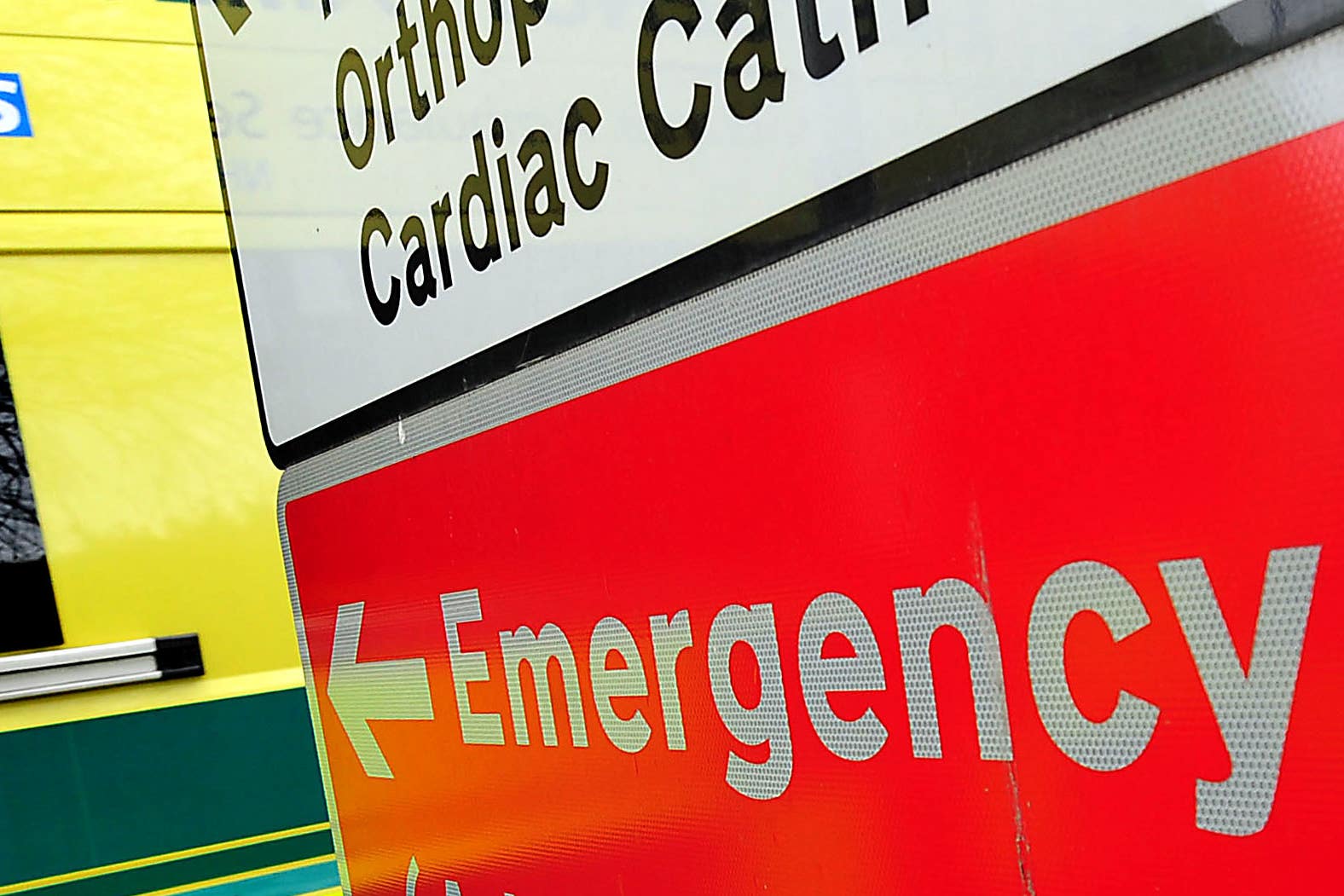Top A&E doctors criticise ‘dangerous’ suggestion that corridor care can be delivered safely
NHS England issued new guidance on the “safest, most effective” way to treat patients in corridors
Your support helps us to tell the story
From reproductive rights to climate change to Big Tech, The Independent is on the ground when the story is developing. Whether it's investigating the financials of Elon Musk's pro-Trump PAC or producing our latest documentary, 'The A Word', which shines a light on the American women fighting for reproductive rights, we know how important it is to parse out the facts from the messaging.
At such a critical moment in US history, we need reporters on the ground. Your donation allows us to keep sending journalists to speak to both sides of the story.
The Independent is trusted by Americans across the entire political spectrum. And unlike many other quality news outlets, we choose not to lock Americans out of our reporting and analysis with paywalls. We believe quality journalism should be available to everyone, paid for by those who can afford it.
Your support makes all the difference.Top emergency doctors have criticised a new guide on how to treat patients in corridors, warning it is “normalising the dangerous”.
New guidance produced by NHS England in September on how to provide “safe and good quality care” in “temporary” spaces.

The Royal College of Emergency Medicine (RCEM) has denounced the guide as “nonsensical” and “out of touch”, saying that it is “not possible to provide safe and good quality care” in corridors and cupboards in a new position statement.
While acknowledging that corridor care is “not acceptable”, the guidance says hospitals are having to use temporary spaces more regularly - and use is no longer “in extremis”. It advises staff on how they can deliver the “safest, most effective and highest quality care possible” in such circumstances.

According to the latest figures, an average of 96,661 beds were filled each day last week, 94.6 per cent of the total available.
RCEM president Dr Adrian Boyle told The Independent in September that the guidance is “insufficient” to tackle “dangerous” 12-hour waits in A&E, adding that publishing the document is an “explicit acknowledgement, and a normalisation, of an unacceptable situation”.
The RCEM’s new statement on the guidance said: “Advice from arm’s length bodies that appear out of touch with what is happening in our departments was always going to be poorly received.”
Using corridors will result in long emergency department waits which are “associated with measurable harm to patients”, it said.
Use of corridors will lead to long waits in emergency departments which is “associated with measurable harm to patients”, it added.
Patient dignity and privacy is “not maintained” when they are cared for in corridors, with sleep “difficult, if not impossible” and unfeasible circumstances for maintaining patient confidentiality.
Controlling the spread of infection is “not possible” and monitoring patients is “challenging” - meaning providing the necessary treatment for patients is “made more difficult and often delayed”, the College added.

“It is distressing for patients, particularly the old and the vulnerable, to be in open, noisy, brightly lit, often cold areas,” the statement adds.
These points are “not consistent with good quality care” and “render many of the statements within the document nonsensical”, the College added.
Dr Boyle, who wrote the statement alongside vice-president Dr Ian Higginson, said: “While we understand why this guidance has been issued, as a College we are concerned that it represents a normalisation of what is an unacceptable and dangerous situation.
“It is not possible to provide truly safe care in environments such as corridors and cupboards. It also evidenced a lack of understanding for what has been happening in emergency departments for years.
“So-called ‘corridor care’ is a result of overcrowding, which leads to extended A&E stays that we know contribute to avoidable death. We and our members cannot, and will not, accept this situation. Rather than advising how to deal with overcrowding, all effort should be focused on preventing it.”
Health secretary Wes Streeting ordered health service leaders to “prioritise patient safety” recently, as the UK enters winter.
An NHS England spokesperson said: “As the document – developed with nurses and clinical leaders – makes clear, NHS England believes that caring for patients in temporary spaces is not acceptable, should never be considered as standard, and should only ever be used when all other options have been exhausted.
“Patient flow through hospitals and capacity in A&E has been impacted by record levels of demand going into winter, a jump in patients hospitalised with viruses like flu and norovirus, and thousands of beds taken up by patients ready for discharge.
“NHS staff are working hard to provide the safest possible care for patients this winter, including better use of live data, an expansion of same day emergency care, and more care in the community.”

Join our commenting forum
Join thought-provoking conversations, follow other Independent readers and see their replies
Comments